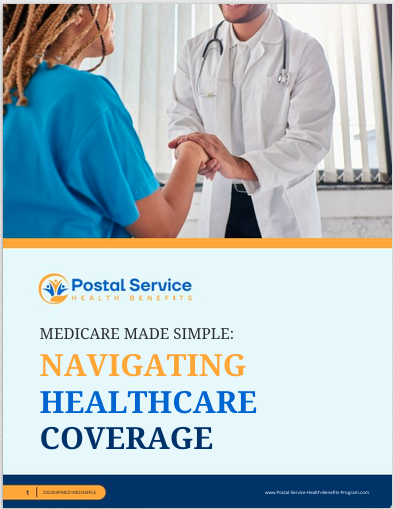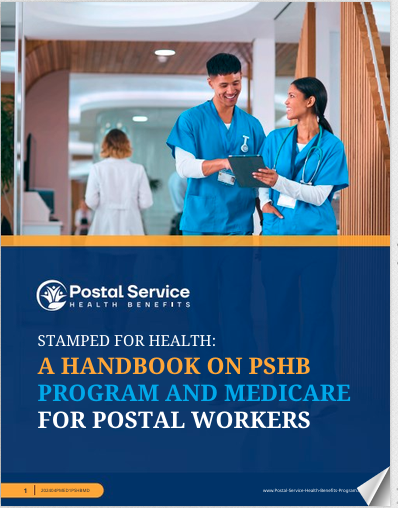Key Takeaways
-
Even with PSHB coverage, you’re still responsible for cost-sharing elements like deductibles, copayments, and coinsurance.
-
Understanding these out-of-pocket responsibilities can prevent financial surprises, especially if you don’t enroll in Medicare when eligible.
The Illusion of Full Coverage
If you’re enrolled in a Postal Service Health Benefits (PSHB) plan, you might assume you’re completely covered when you visit the doctor or pick up a prescription. But that’s not the whole picture. What many enrollees don’t immediately realize is that even with robust PSHB coverage, you’re still responsible for a portion of your healthcare costs. And that portion can add up quickly if you’re not aware of how it works.
Let’s unpack the areas of cost-sharing that can leave you paying more than expected—and how you can better prepare.
What Cost-Sharing Actually Means
Cost-sharing refers to the portion of medical expenses that you, as the enrollee, are responsible for paying out-of-pocket. PSHB plans include several common forms of cost-sharing:
-
Deductibles: The amount you must pay each year before your plan starts covering most services.
-
Copayments: Flat fees you pay for specific services, like a $30 copay for a primary care visit.
-
Coinsurance: A percentage of the cost of a service that you must pay, such as 20% of a hospital bill after meeting your deductible.
Each PSHB plan has a different structure, and some services may have all three types of cost-sharing depending on how the plan is designed.
Why You Can’t Ignore Your Deductible
In 2025, PSHB in-network deductibles typically range from $350 to $2,000 depending on the type of plan you choose (low-deductible vs high-deductible). Until you meet your deductible, most services are your financial responsibility, with a few exceptions like preventive screenings.
Here’s what to keep in mind:
-
If you have a chronic condition or anticipate multiple medical visits, you’ll hit your deductible sooner.
-
High-deductible plans may offer lower premiums, but they require a larger upfront payment for care.
-
If you delay treatment early in the year, you may be underestimating your eventual costs.
Copayments Add Up Faster Than You Think
While copayments seem manageable, they can pile up fast:
-
Office visits often require a $20 to $40 copayment.
-
Specialists may cost you $30 to $60 per visit.
-
Urgent care visits typically charge between $50 and $75.
Multiply these by multiple visits per year, and you’re suddenly spending hundreds of dollars on routine care alone. PSHB does limit out-of-pocket maximums, but that doesn’t mean these small fees are insignificant.
Coinsurance: The Sneakiest Cost
Coinsurance is often overlooked, yet it can cost you more than you realize—especially for expensive services like:
-
Hospital admissions
-
Surgeries
-
Imaging like MRIs and CT scans
For instance, paying 20% of a $5,000 hospital bill still leaves you owing $1,000. And this comes after meeting your deductible.
In-network coinsurance typically ranges between 10% to 30% under PSHB in 2025, while out-of-network services can exceed 40% or even 50%. That’s why staying in-network is more critical than ever.
Medicare Eligibility and PSHB: Why Coordination Matters
If you are a Postal Service annuitant and are eligible for Medicare, your PSHB costs can significantly shift depending on whether you enroll in Medicare Part B.
Here’s why:
-
Without Medicare Part B, your PSHB plan becomes your primary payer, and you bear the full brunt of coinsurance and deductibles.
-
With Medicare Part B, many PSHB plans reduce or waive cost-sharing entirely for services that Medicare covers.
In 2025, certain Medicare-eligible annuitants are required to enroll in Part B to retain PSHB drug coverage and lower out-of-pocket costs. If you’re exempt, it’s still worth considering Part B to reduce your coinsurance burden.
Prescription Costs Are Still Yours to Manage
PSHB includes prescription drug coverage, but that doesn’t mean you won’t pay anything. Here’s how:
-
Tiered formularies: Drugs are grouped by cost and coverage level.
-
Copays and coinsurance: Brand-name or specialty drugs often come with high coinsurance or set copayments.
-
Annual prescription drug caps: As of 2025, many PSHB plans that integrate with Medicare Part D cap out-of-pocket drug spending at $2,000 annually.
If you’re not enrolled in Medicare, you could pay more for your medications and have a less predictable ceiling for your costs.
The Danger of Out-of-Network Services
Out-of-network services can drastically inflate your bill. Here’s how:
-
Deductibles are often double or more.
-
Coinsurance can rise from 20% in-network to 50% out-of-network.
-
Some services may not be covered at all.
Check if your provider is in-network before receiving care. Even emergency services can carry balance billing risks if not coordinated properly.
Your Annual Out-of-Pocket Maximum Isn’t a Free Pass
PSHB plans have out-of-pocket maximums, which is the most you’ll pay for covered in-network services in a calendar year. For 2025, these limits are typically:
-
$7,500 for Self Only
-
$15,000 for Self Plus One and Self & Family
But reaching this cap can still be painful. These figures don’t include premiums or out-of-network costs. You still must pay deductibles, copayments, and coinsurance until that maximum is hit.
Also remember:
-
The out-of-pocket maximum resets each January.
-
Pharmacy costs may or may not count toward your medical cap, depending on plan design.
Timing Matters: The Start-of-Year Effect
Every January, your deductible resets. If you have a major medical procedure early in the year, expect a high upfront cost. If you time care closer to year-end, you may have already met your deductible or out-of-pocket cap, reducing your financial exposure.
That means:
-
Plan your appointments wisely.
-
Review prior claims so you know where you stand.
-
Avoid putting off care to the point it becomes more expensive later.
Don’t Assume You’re Covered Just Because You’re Enrolled
PSHB coverage is strong, but it’s not automatic protection against all costs. Too many enrollees find out the hard way when:
-
A high hospital bill lands due to coinsurance
-
A surprise specialist visit triggers a large copay
-
Out-of-network lab work generates unexpected charges
Avoid these situations by:
-
Reading your plan brochure carefully
-
Calling customer service before scheduling services
-
Confirming in-network status every time
You Can’t Control Emergencies, But You Can Control Preparation
Unexpected health events happen. What you can control is how prepared you are for them.
-
Keep a budget for out-of-pocket medical expenses
-
Know your deductible and how close you are to meeting it
-
Track your out-of-pocket maximum progress throughout the year
Understanding what you owe and why you owe it is the key to using PSHB effectively.
The Real Cost of Not Knowing Your Plan
When you don’t understand your cost-sharing responsibilities, you risk delaying care, misjudging affordability, or falling into medical debt. The strength of the PSHB program lies in its combination of coverage and transparency—but only if you take advantage of that transparency.
The cost you didn’t plan for isn’t just financial—it’s peace of mind.
Be Proactive, Not Reactive, with Your PSHB Plan
Your PSHB benefits are a powerful resource, but they require active management. Don’t assume full coverage means zero cost. Look into your deductibles, monitor your copays, avoid out-of-network charges, and coordinate with Medicare when eligible.
If you’re unsure about what your plan covers or whether Medicare enrollment makes sense in your situation, get in touch with a licensed agent listed on this website. They can walk you through the numbers, timelines, and exceptions you might not catch on your own.







